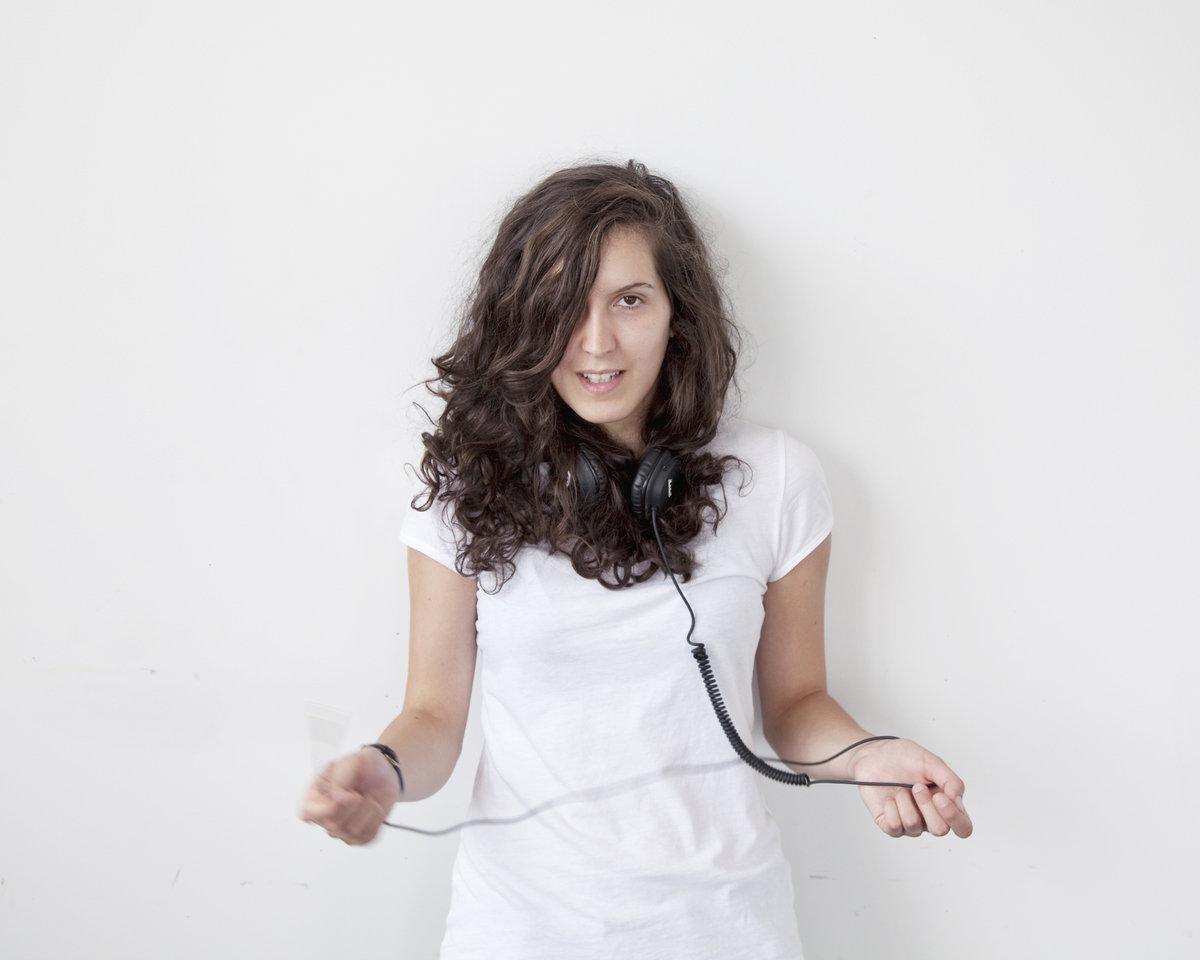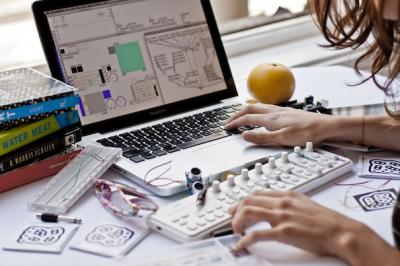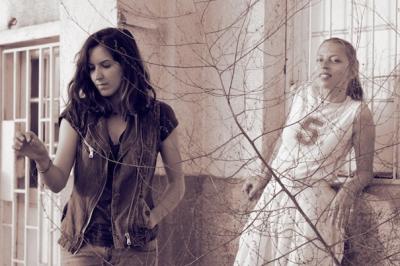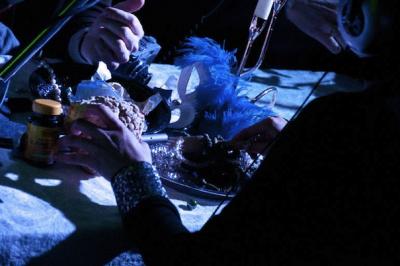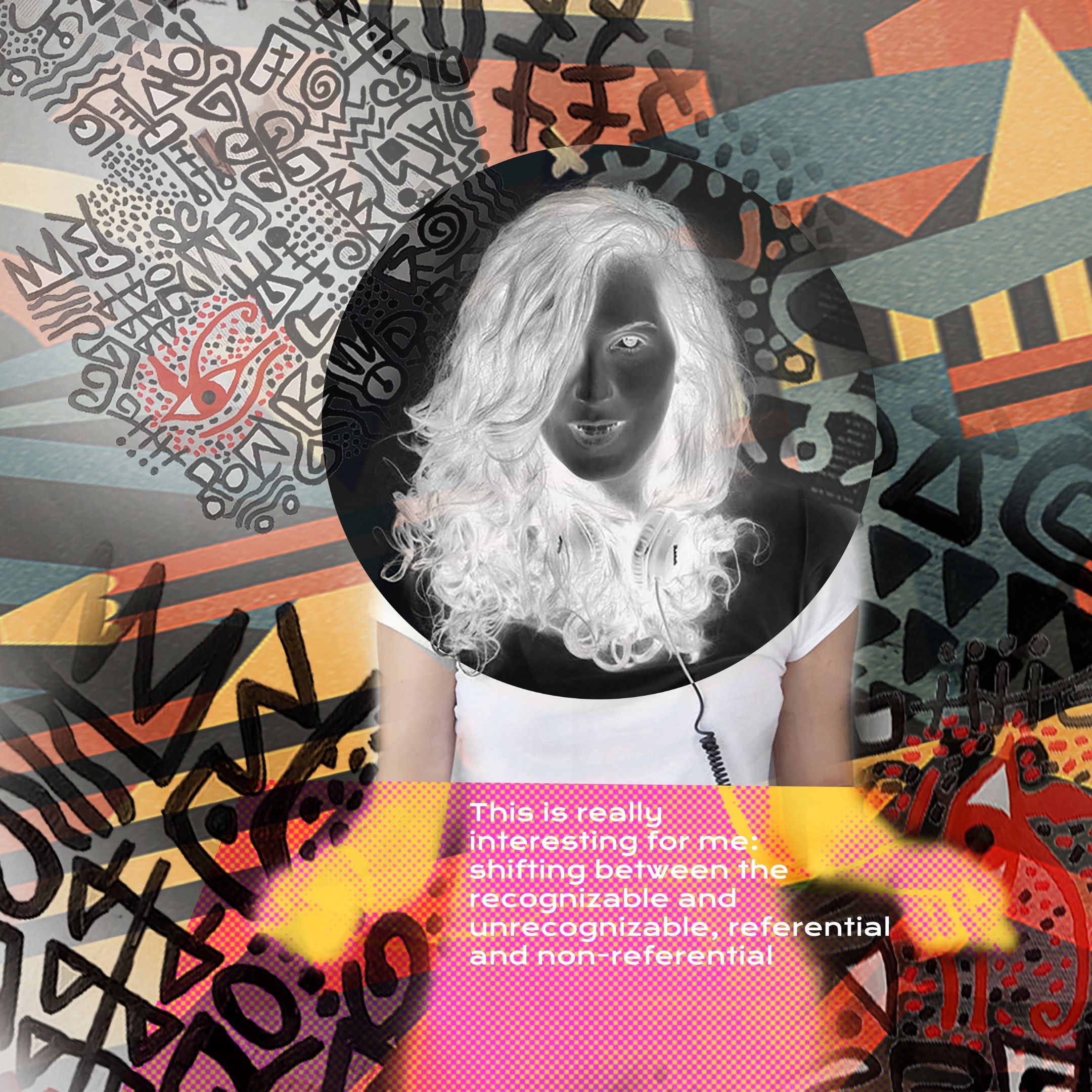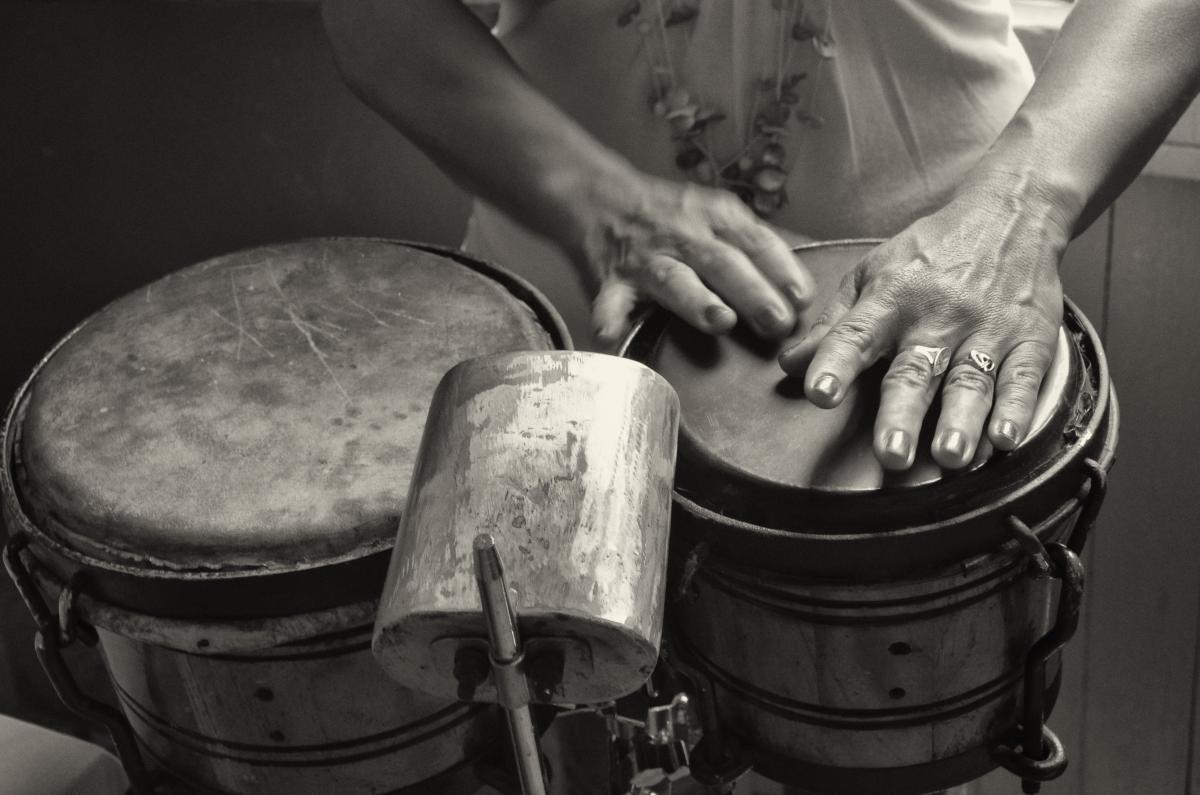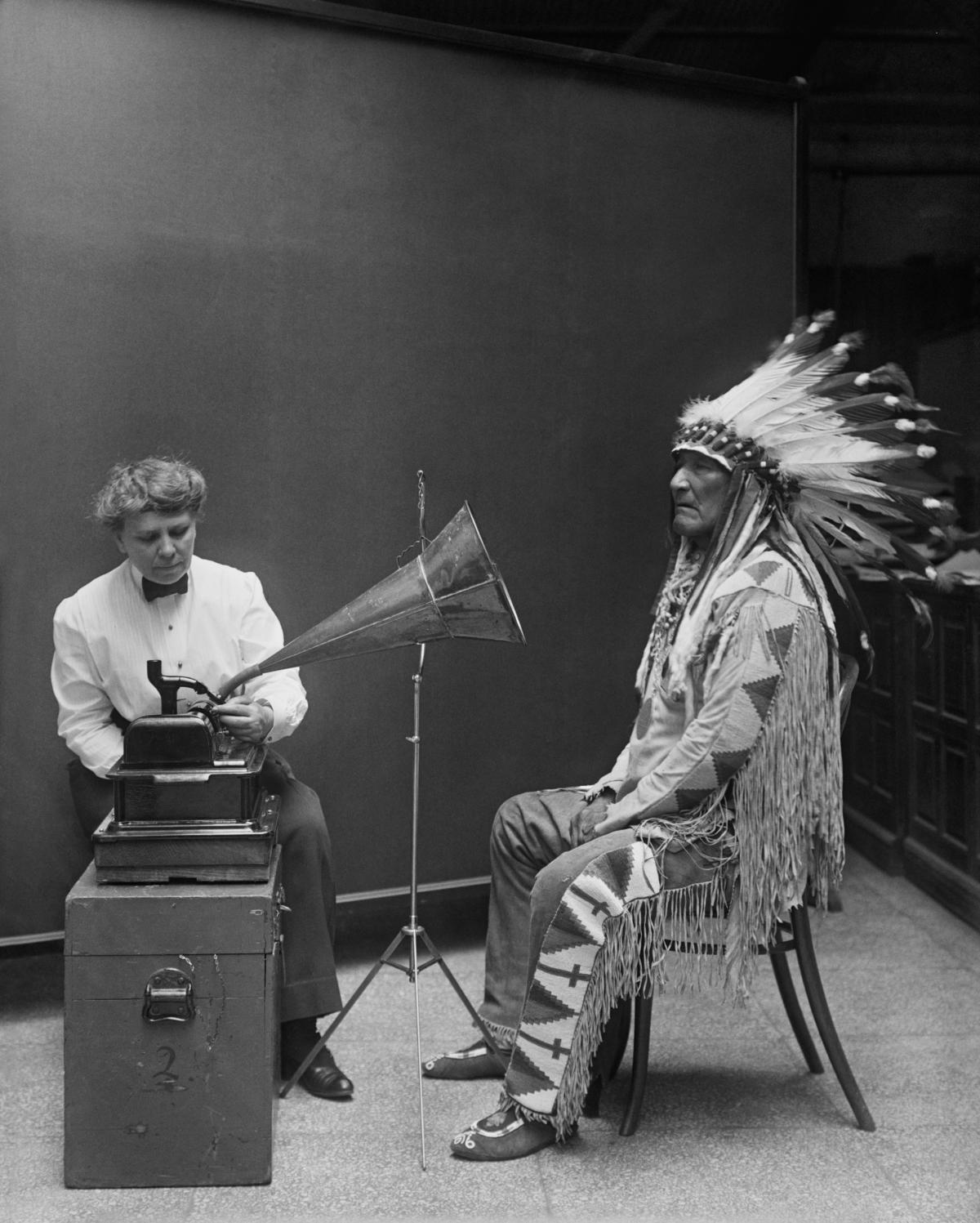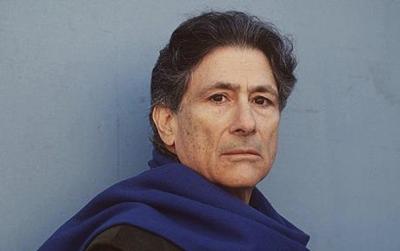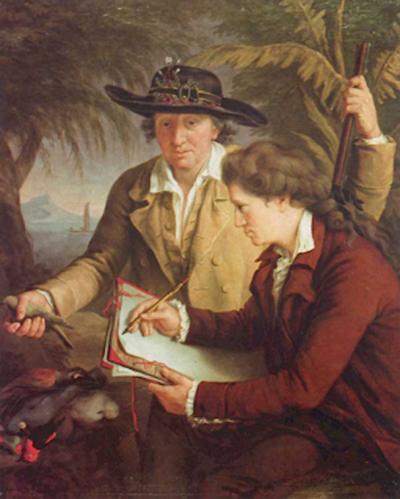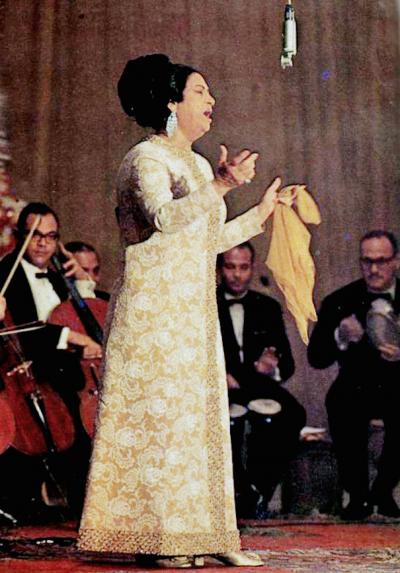Im dritten Teil des Norient Dossiers Popular Orientalism(s) beleuchtet die Kulturelle Musikwissenschaftlerin Birgit Abels «Edward Saids dunkle Seite des Mondes». Sie entlarvt den Literatur- und Kulturkritiker Said als «fürchterlichen Ethnozentriker», zumindest dann, wenn es um Musik geht. Mit seinen Äusserungen zu Musik stehe er fest in einem kolonialen Diskurs, der nicht zuletzt die «Mehrstimmigkeit» als zentrale Errungenschaft «westlicher Musik» betrachte. Der Artikel basiert auf einem Beitrag Abels am Institut für Musik und Musikwissenschaft der Universität Hildesheim als Teil des Symposiums «Popular Orientalism(s)».
Solange du dir das Unbewusste nicht bewusst machst, wird es dein Leben bestimmen und du wirst es Schicksal nennen. (Carl Gustav Jung)
Wenn grosse Namen der nordatlantischen Geistesgeschichte über Musik schreiben, dann verrät das Ergebnis nicht selten etwas über Denkstrukturen, die in ihrer Urheber übrigem Œuvre weniger transparent zutage liegen: Ludwig Wittgenstein und Roland Barthes sind bekannte Beispiele hierfür, und auch auf Edward Said trifft dies zu. Die post-colonial studies sind schwer denkbar ohne Edward Saids Arbeiten, allen voran auch wegen der umfassenden Popularität von Orientalism aus dem Jahr 1978. Said gehört zweifelsohne zu den einflussreichsten Figuren der Kulturwissenschaften des 20. Jahrhunderts. In seinen Schriften demaskiert er unter anderem das Sprechen über kulturelle Praktiken als diskursive Stellschraube in hochkomplexen Machtgefügen und baut auf diese Weise mit an dem Fundament, auf dem postkolonial orientierte Geisteswissenschaft bis zum heutigen Tag steht.
Doch gerade wenn es um Musik geht, wird dieses Fundament porös, denn dann wird Said schlicht und ergreifend ein fürchterlicher Ethnozentriker. Das stellt nicht die Wichtigkeit dessen infrage, was Said geleistet hat, aber es zwingt uns dazu, all das kontinuierlich zu relativieren, woraus wir uns in den Geisteswissenschaften so gerne neue, sicherheitsstiftende Orthodoxien bauen, deren Halbwertszeiten seit Mitte des 20. Jahrhunderts immer kürzer werden. Im Falle Edward Saids ist eine der wichtigsten und ganz offensichtlich überaus orthodoxietauglichen Erkenntnisse zunächst die inzwischen alte und weitreichende Einsicht, dass es weder den Orient noch den Okzident überhaupt gibt. Das Problem dabei ist, dass diese Einsicht gelegentlich dazu führt, dass wir uns in der Sicherheit der vermeintlichen Erkenntnis wiegen – und aus eben dieser Sicherheit heraus doch wieder an der diskursiven Fortschreibung des vordergründig dekonstruierten Konzepts mittun.
Denn auch als selbstdeklariert postmoderne Wesen tendieren wir noch immer dazu, Heroengeschichte schreiben. Said ist einer dieser Heroen, von denen wir – vielleicht: gerade – zu Anfang des 21. Jahrhunderts nicht lassen wollen, nicht lassen können. Dass gerade seine Arbeiten, kritischem Denken so explizit verhaftet wie sie waren, seit inzwischen mehreren Jahrzehnten auf eine Art rezipiert werden, die die Beschreibung «neue Orthodoxie» sogar noch als etwas blass erscheinen lässt, sollte uns eigentlich erschrecken. Das tut es aber nicht oder es tut es nur selten. Was ich hier schreibe, ist Teil einer Art Versuch der autotherapeutischen Meditation über diese Diagnose unserer eigenen Pathologie, – eine Meditation, an deren vorläufigem Ende der implizite Gedanke im Raum hängen bleiben wird, dass die Frage, was wir aus dieser Misere lernen können, völlig falsch gestellt ist. Die Frage muss nämlich sein, was wir tun können, was wir tun müssen.
Fangen wir weiter vorne an. Ich nehme das Jahr 1944 als Ausgangspunkt.
Said und die Musik
1944 war Edward Said (Idwārd Wadīʿ Saʿīd) neun Jahre alt und hatte das in seiner retrospektiven Wahrnehmung ausgesprochen zweifelhafte Vergnügen, einem Konzert der ägyptischen Grande Dame de la Musique Umm Kulthum beizuwohnen. Im folgenden Video führt Umm Kulthum Enta Omri, aufgenommen im Olympia Théâtre, Paris, November 1967 (es ist nicht bekannt, welchem Konzert von Umm Kulthum genau Said in den 1940er Jahren beigewohnt hat).
Edward Said selbst hat sehr viel später in seinem Leben mindestens zweimal über diese für ihn traumatische Kindheitserfahrung gesprochen. Sie ist ständige implizite Referenz, wenn Said – bourdieusch gesprochen: in bestem Distinktionsverhalten – über europäische Polyphonie und europäischen Kontrapunkt spricht.
It was a dreadful experience for me (...) It did not begin until 10 o’clock at night. I was half asleep. I was a kid. And there was this great crowded theatre. There did not seem any order to it. The musicians would wander on stage, sit down and play a little bit, wander off, and then come back, and finally she would appear. And they would sing together with her orchestra. And her songs would go on for forty to forty-five minutes. And to me there was no kind of form or shape, it seemed to be all more or less the same. And the tone was mournful, melancholic. I did not understand the words. Above all what I missed, I realize now, was counterpoint. It is very monophonic music. I think it is designed to send people, not exactly into a stupor, but would induce a kind of melancholic haze, which people like. And I found it very disturbing. Mentally it made you inactive. (This ...) is entirely subjective. So I very early on rejected it and began to focus exclusively on Western music, for which I hungered more and more. (Said im Interview mit Zeeman 2003).
So spricht der andernorts so brillante Analytiker Edward Said. Er sagt nicht, er habe sich nicht in Beziehung setzen können zu dieser Musik. Er sagt, es sei «sehr monophone» (sic!) Musik, die dazu gemacht sei, Menschen in Stupor zu schicken. Man schlage Orientalism an beliebiger Stelle auf, um zu schauen, welche Klischees von «dem Orientalen» Said in der Literatur vergangener Jahrhunderte dekonstruiert hat: Inaktivität, Melancholie und Stupor.
«Westliche» Musik beruht für Said über sein gesamtes Oeuvre hinweg vor allem auf zwei Errungenschaften: 1) auf Polyphonie und 2) auf Kontrapunkt. Er macht eine deutliche Hierarchie auf zwischen dieser «westlichen» Musik und dem, was er «sehr monophone» Musik nennt. Ich habe in meiner wissenschaftlichen Adoleszenz von ebendiesem Edward Said, genauer von seiner Arbeit Orientalism gelernt, dass eine diskursanalytische Archäologie der Konzepte, mit der wir Menschen und kulturellen Praktiken Kategorien zuweisen, manchmal unerhörte Strukturen ans Tageslicht bringt. Strukturen, die versteckte und manchmal weniger versteckte Machtansprüche und für gegeben gehaltene Dogmen offenlegen. Die Auseinandersetzung mit der Geschichte eines der Konzepte, mit denen Said zentral arbeitet, nämlich der Polyphonie, lässt in diesem Zusammenhang tief blicken.
Wessen Polyphonie?
Der Polyphonie-Diskurs ist ausgesprochen aufschlussreich, wenn es um die diskursive Konstruktion des Anderen geht. Said selbst hat sich im Zusammenhang mit seinem Orientalismus-Projekt kaum reflexiv mit Musik und Sprechen über Musik auseinandergesetzt. Um Saids Denken in dieser Hinsicht zu kontextualisieren, bietet sich ein kleiner gedanklicher Sprung an, ein Sprung zur Beschäftigung mit dem, wofür auch Said sich in Orientalism interessiert hat: mit historisch gewachsenem Sprechen über den Anderen, und mit historisch gewachsenem Sprechen über das Andere. Dieser Sprung führt ins ausgehende 18. Jahrhundert und zur britischen Erkundung des pazifischen Ozeans.
Ein Name, der auf sehr schillernde Art mit dieser Zeit und ihren Ambitionen verbunden ist, ist der James Cooks. Denn James Cooks drei Reisen in den Pazifik zwischen 1768 und 1779 waren von immenser kulturhistorischer Bedeutung, galt es doch – insbesondere während der zweiten Fahrt an Bord der Resolution und der Adventure 1772–1775 – den seit Jahrhunderten kursierenden Spekulationen über einen unbekannten aber bewohnbaren, mystifizierten Südkontinent jenseits des geographisch Bekannten nachzugehen. Cook und seine Crew kartographierten nicht wenig bis dato unbekanntes Land und brachten zahlreiche, teilweise musikbezogene Objekte mit. Doch wenn die zweite Reise Cooks auch für die Musikwissenschaft bedeutsam sein würde, dann lag das noch an anderen Dingen, und zwar vor allem an den Beschreibungen von Musik und Musikinstrumenten, die Cooks Besatzung während der Fahrt zu Papier brachte. Hauptgewährsmänner in diesem Zusammenhang sind James Burney (1750–1821) sowie Johann Reinhold Forster und dessen Sohn Georg (1754–94).
Alle drei haben Beschreibungen von polynesischer Musik der 1770er Jahre hinterlassen. Ihre Aufzeichnungen und auch Transkriptionen sorgten für einen nicht unerheblichen Ruck durch die vorherrschenden kulturgeographischen Weltordnungsvorstellungen, letztlich: die vorherrschenden musikalischen Kartographien. Vor allem ein vermeintliches Gegensatzpaar schien die verwunderten Zeitgenossen regelrecht zu verfolgen, ein Gegensatzpaar, dessen beiden Teile doch nicht so wirklich zueinander passen wollten: das Vorhandensein vokaler Mehrstimmigkeit einerseits, zudem gar nicht mal unangenehm im Sinne der Terminologie der sich just in jenen Jahrzehnten formierenden modernen Philosophie; angenommenes Barbarentum andererseits.
In den späten 1770er Jahren verstörten Forsters Aufzeichnungen auch den in Göttingen wirkenden Nikolaus Forkel, der immer gern als einer der Gründungsväter der deutschen Musikwissenschaft angesehen wird, erheblich, – jedoch faszinierten sie ihn auch mindestens so sehr wie sie ihn verstörten. Ähnlich wie bei einigen seiner Zeitgenossen regte sich auch bei Johann Nikolaus Forkel verwunderte Neugier ob der aus Polynesien mitgebrachten Beschreibungen und ein Bedürfnis nach mehr Information:
Wir müssen noch als seine zwote musikalische Seltenheit anführen, was dem Hrn. Forster bey seinem dritten Besuch in Neu-Seeland aufgestossen ist. Es muss seltsam scheinen, dass Harmonie, oder mehrstimmige Musik, die, wie man jetzt allgemein glaubt, und aus guten Gründen glauben kann, nicht einmal den erfinderischen und feinen Griechen bekannt gewesen ist, bey gewissen von der übrigen Welt ganz abgesonderten Barbaren gefunden werden sollte (1778: 318).
Der Pazifik und seine Inseln waren zu jener Zeit nicht die einzige Ecke der Welt, die aus europäischer Sicht im Entdecken begriffen war. Und doch nahm er im evolutionistischen Denken eine Sonderposition ein. Die Gründe liegen deutlich komplexer, als dass man sie in einem Satz fassen könnte, aber die Einordnung lokaler Traditionen und Musiken in bestehende, hierarchisch organisierte Ordnungssysteme fiel augenscheinlich an manch anderem Ort leichter, während Südseekulturen als konstruiertes Kollektiv mit den Anfängen der Menschheit assoziiert und mit romantisierend-verklärten Konzepten wie dem des Noble Savage in Verbindung gebracht wurden. Wenn die Menschen, über deren mehrstimmig strukturierte Musik unter anderen Forster nachgrübelte, die lebendige Vorstufe kultureller «Hochentwicklung» waren, wie war es dann möglich, dass sie offensichtlich über diesen Inbegriff musikalischer Kultiviertheit, die Mehrstimmigkeit, verfügten – hatten doch nicht einmal die Griechen so etwas?
«Primitive» Menschen mit «hochentwickelter» Musik, und dann auch noch so nah am Wendekreis des Steinbocks, also fernab von allem, was man im Westeuropa der Zeit mit dem Konzept der Zivilisation in Verbindung brachte? Ein Rätsel. Und dieses Rätsel sollte noch eine ganz Zeit lang ein schmerzhafter Dorn im Fleisch der vorherrschenden Weltordnungen bleiben. 1787, also mehr als zehn Jahre nach Bekanntwerden von Forsters und Burneys Beobachtungen, schreibt der Hannoveraner Geheime Kanzlei-Sekretaer und Redakteur des Hannoverischen Magazins Friedrich Arnold Klockenbring (1742–95) in seinem Essay «Etwas über die Musik in den neuerlich entdeckten Südländern, besonders ueber den Unterschied zwischen dem Intervallsystem dieser Voelker und dem unsrigen»:
Obgleich die Neuseeländer ungemein viel härter, kriegerischer und heftiger von Leidenschaften sind, als die Bewohner der näher nach dem Aequator zu, unter mildern Himmelsstrichen gelegenen Inseln: so übertrifft doch ihre Musik an Mannigfaltigkeit und Sanftheit der Töne, die Musik auf Taheite und Anamoka gar sehr (1787: 93).
Die Frage nach dem Zusammenhang von vermeintlich kulturspezifischen Musikästhetiken sowie musikalischen Charakteristika und Strukturen bringt Klockenbring im Folgenden dazu, sich aus seinem Hannoveraner Lehnstuhl heraus gewissermassen zu beschweren – nämlich darüber, dass Reiseberichte Musik und Tanz zu ignorieren tendieren. Das, so Klockenbring, müsse sich ändern, denn Musik sei von äusserstem Interesse, sei sie doch die «älteste und universalste» (sic!) Kunstform. Sie habe profunden Einfluss auf «primitive Völker» und sei je enger verbunden mit moralischen Vorstellungen von Menschen, desto näher diese der Natur seien. Mehrstimmigkeit geht also einher mit einer dezidierten Vorstellung von kultureller «Entwickeltheit». Hier hallt Saids «sehr monophone» Musik, die die Menschen fast in Stupor sende, mit einem ausgesprochen unangenehmen Scheppern nach.
Wie viele seiner Zeitgenossen war Klockenbring in seinem Interesse an James Burneys und Forsters Aufzeichnungen inspiriert von der Vorstellung von «den Uranfängen der Musik», die in der Begegnung mit dieser Musik der Anderen, von der Burney und Forster berichteten, greifbar zu werden schien. Schnell auch führten die Überlegungen zu Reflexionen über jenes Lieblingskind baldiger musikethnologischer beziehungsweise vergleichend-musikwissenschaftlicher Forschung, nämlich die diatonische Tonleiter. Grenze es nicht an ein Wunder, fragt Klockenbring rhetorisch und vielleicht mit ein wenig böser Zunge, wenn die Maori eine «nationale Musik» hätten, die niemals «in die Hände der Kunst» gelangt sei, die in ihrer intervallischen Struktur aber dennoch mit jener korrespondiere, die sich in Europa nach dem Verschwinden der griechischen Modi verfestigt habe? Sei es, anders gesagt, nicht ein Wunder, wenn die europäische musikalische Künstlichkeit eine antipodale neuseeländische musikalische Natürlichkeit besässe? Und wenn dann noch beide einander strukturell nicht nur unähnlich seien?
Klockenbrings Text liest sich wie ein interessantes Beispiel unentschieden kulturrelativistischen Denkens des späten 18. Jahrhunderts. Aber im aufklärerischen Diskurs gibt es bekanntlich herzlich wenig Platz für Wunder – weswegen, wie Klockenbring suggeriert, es dringend der eingehenden Erforschung dieser Musiken bedürfe. Die Linie von hier zur frühen Vergleichenden Musikwissenschaft ist direkt. Das wird im Allgemeinen für eine andere Geschichte gehalten. Doch ist es das wirklich?
Von Cook zu Said
Auch Edward Said steht mit seinen Äusserungen zu Musik fest in jenem kolonialen Diskurs, dessen frühe Entwicklung ich eben skizziert habe und der direkt zum Aufkommen systematisch-geisteswissenschaftlicher Beschäftigung mit Musik führen sollte. Die Brillanz, mit der Said ja genau diese Diskurse in seinem übrigen Oeuvre entlarvt – wenn es um Malerei, wenn es um Literatur geht –, lässt sich hier schmerzlich vermissen. In gewisser Weise ist der unapologetische Ethnozentrismus, dem Said sich hier fast in seliger Unbedarftheit hinzugeben scheint, beinahe rührend in seiner Naivität: der sonst so scharfzüngige und ungnädige Kritiker wird plötzlich ganz milde – und unkritisch.
Diese menschliche Facette Edward Saids scheint mir ein springender Punkt zu sein, wenn es um seine Arbeiten zur Musik geht und darum, was wir von ihnen lernen können – was wir vielleicht auch von ihnen lernen müssen. Said schreibt über Musik nicht als Wissenschaftler. Das mache ich nicht einmal daran fest, dass eine Formulierung wie «sehr monophon» musiktheoretischer Unfug ist, sondern an Saids Distanzlosigkeit und Kritikferne, wenn es um Musik geht – um «seine» Musik, denn er hantiert einen sehr engen Musikbegriff. Am Ende eines langen Tages sind wir alle nur Menschen, und die Unterscheidung zwischen Professionalität und Amateurhaftigkeit dient in den Geisteswissenschaften seit jeher dazu, dass wir uns als Wissenschaftler legitimieren, um auf diese Weise akademische Autorität zu konstruieren.
Bei aller Sympathie, im Wortsinn, für die Menschlichkeit in Saids Denken über Musik bleiben mir blaue Flecken. Denn was Said über Musik schreibt, wirft ein anderes Licht auf sein grundlegendes Kulturverständnis, ein Kulturverständnis, das in Saids übrigen Oeuvre durch die Zeilen schimmert, das aber meines Erachtens nirgends so überdeutlich wird wie an den Stellen, an denen er über Musik schreibt. Kofi Agawu bringt es wie folgt auf den Punkt:
For Said, music is Bach, Beethoven and Brahms (not Schoenberg, as it was for Adorno); for him, theory is Vico, Marx, Auerbach, Foucault and Gramsci; and for him, literature is Chaucer, Austen, Dickens, Flaubert and Conrad. Even in the book Culture and Imperialism, in which he engages artistic production from the Third world (including Rushdie, Achebe and Soyinka), the frames of reference are still European. Achebe does not write but «writes back», so to speak, just as the empire has written back. The framework for critical assessment remains European (Agawu 2007).
In Bezug auf Musik bleibt bei Said nicht nur der Denkrahmen eurozentrisch, sondern auch die eigene Weltordnung, die darüber hinaus nie irgendetwas anderes sein möchte.
Orientalism ist ein sehr schlichtes Buch und gerade deswegen so stark. Es hat eine grundlegende Idee zum Thema: nämlich das koloniale Motivationsdispositiv hinter der Konstruktion Orient. Das Buch ist eine lange, unendlich wichtige Materialmeditation über diese Feststellung. Es ist deswegen für die gesamten Geisteswissenschaften so wegbereitend gewesen, weil seine Grundidee in ihrer Einfachheit relevant ist für so gut wie jedes Nachdenken über kulturelle Praktiken.
Aber damit sind wir – und ich spreche jetzt nicht mehr über Said, sondern über uns als Musikwissenschaftler und Musikwissenschaftlerinnen im 21. Jahrhundert – erst am Anfang. Kofi Agawu, derselbe Agawu, der auch die eklatanten Fabrikationsfehler im dahinterstehenden Denken sieht, hat Orientalism mal als «Geste des Widerstands» gegen hegemoniale Denkmuster bezeichnet, und das unterschreibe ich. Aber Saids Arbeiten zur Musik zeigen auch, wie gefährlich eine noch so brillante Geste des Widerstands sein kann, denn sie macht in Sicherheit Wiegen. Wir haben nichts gelernt von Saids Orientalism, wenn wir auch im 21. Jahrhundert noch unkritisch von «dem Westen» sprechen, oder in der Musikwissenschaft von «Ethnomusikologie», also der Musikwissenschaft von nicht-der-westlichen-Musik, als ob es die gäbe – eine «music in Most of the World», um Partha Chatterjee (2004) zu paraphrasieren. Beides ist eine Fortschreibung kolonialer Weltordnung.
Edward Said hat uns Strukturen gezeigt, an denen wir kranken: Wir werden es naturgemäss nie schaffen, uns ihnen gänzlich zu entwinden. Das liegt in der Natur der diskursiven Verfasstheit unseres Tuns als Geisteswissenschaftler und -wissenschaftlerinnen. Und doch: wenn Dekolonialisierung kein leeres Wort bleiben soll, dann stehen wir in der Verantwortung, uns deutlich mehr zu bemühen.
Gut gebrüllt, Löwe – die Konsequenz aus all dem ist bei Tageslicht betrachtet freilich mehr als schmerzhaft. Die Konsequenz ist nämlich die Aufgabe jener Autorität, die geisteswissenschaftliches Sprechen für sich in Anspruch nimmt. Die Aufgabe der Autorität, die wir als Wissenschaftler und Wissenschaftlerinnen für uns in Anspruch nehmen. Und diese Konsequenz ist meines Erachtens lange überfällig. Wir feiern fröhlich die Turns in den Geisteswissenschaften und geben ihnen beinahe wissenschaftsevangelikalen Charakter, denken jedes Mal wir hätten den heiligen Gral gefunden, – und sind dabei nicht bereit, die Perspektivität und die Menschlichkeit unseres Nachdenkens von einer Schwäche in eine Stärke zu verwandeln. Stattdessen bauen wir immer wieder neue Orthodoxien, die die alten Strukturen bloss auf subversive Art neu aufleben lassen und damit letztlich durch und durch neo-kolonial sind. Gerade die vielbesungenen Turns sind ein spannendes Kapitel jener galoppierenden Enthusiasmusgeschichte, mit deren Hilfe wir vor den schlussendlichen Konsequenzen aus dem, was unter anderem ein Edward Said angelegt hat, friedlicher die Augen schliessen zu können glauben. Vorsicht vor diesen neuen Orthodoxien bedeutet aber auch: Vorsicht vor Tributpflichten, wie sie Meilensteinbücher wie Orientalism einfordern. Allerdings Vorsicht eben auch vor Verurteilungen; auch vor Verurteilungen eines Edward Said und seiner Menschlichkeit, Allzumenschlichkeit, wenn er über Musik schreibt. Menschlichkeit ist etwas, womit wir wissenschaftlich nach wie vor noch umzugehen lernen müssen. Es ist höchste Zeit.
Eingangs habe ich Saids Erinnerung aus dem Jahr 2000 an Umm Kulthums Konzert zitiert. Fast zehn Jahre, bevor er in einem Interview mit dem niederländischen Fernsehen diese Beschreibung gab, hatte er sich schon einmal zu jener Konzertsituation geäussert. Damals, nachzulesen in Musical Elaborations (1991), liest sich das so:
The first musical performance I ever attended as a very small boy (in the mid-1940s) was a puzzling, interminably long, and yet haunting concert by Umm Kalthoum, already the premier exponent of classical Arabic song. I had no way of knowing that her peculiar rigor as a performer derived from an aesthetic whose hallmark was exfoliating variation, in which repetition, a sort of meditative fixation on one or two small patterns, and an almost total absence of developmental (in the Beethovenian sense) tension were the key elements. The point of the performance, I later realized, was not to get to the end of a carefully constructed logical structure – working through it – but to luxuriate in all sorts of byways, to linger over details and changes in text, to digress and then digress from the digression. And because, in my preponderantly Western education (both musical and academic) I seemed to be dedicated to an ethic of productivity and of overcoming obstacles, the kind of art practiced by Umm Kalthoum receded in importance for me. (1991: 90)
Verglichen mit dem eingangs zitierten Interviewabschnitt wird deutlich, wie sehr dieser Edward Said eigentlich mit sich ringt, und das in diesem Zusammenhang gar nicht mal primär intellektuell: wie er ringt darum, den kritischen Denker Edward Said und den kleinen Jungen im Konzert Edward Said sich miteinander vertragen zu lassen.
Positively, I do believe – and in my other work have tried to show – that enough is being done today in the human sciences to provide the contemporary scholar with insights, methods, and ideas that could dispense with racial, ideological, and imperialist stereo-types of the sort provided during its historical ascendancy by Orientalism. I consider Orientalism's failure to have been a human as much as an intellectual one; for in having to take up a position of irreducible opposition to a region of the world it considered alien to its own, Orientalism failed to identify with human experience, failed also to see it as human experience (1978: 328).
So beginnt der letzte Absatz von Edward Saids Orientalism, einer der wenigen Absätze in diesem Buch von denen ich denke, dass Said hier zu optimistisch war. Die «menschliche Erfahrung» und ihre Relevanz in kulturwissenschaftlichem Sprechen könnten auch kaum deutlicher sein als sie das in Saids Schriften zur Musik sind. Der Denker und der kleine, sich seiner Umgebung affektiv ausgeliefert fühlende Junge kämpfen miteinander. Dieses Dilemma kennen wir alle, die wir über Menschen und ihre kulturellen Praktiken, und damit immer irgendwie auch über uns selbst, schreiben.
Hier liegt nicht nur eine Chance, sondern auch eine grosse Verantwortung. Denn dass wir das müssen, uns diese Verletzlichkeit und Perspektivität eingestehen, weil wir nämlich die Autorität wissenschaftlichen Sprechens längst dekonstruiert haben, das wissen wir eigentlich seit mindestens 50 Jahren. Aber der Orientalismus ist im alltäglichen Wissenschaftsbewusstsein noch lange nicht so demaskiert wie Said es ermöglicht hat, schon gar nicht in der Musikwissenschaft.
Aber vielleicht müssen wir uns just deswegen sehr viel bewusster gerade auch den weiter reichenden Implikationen von Saids Analyse stellen, die nämlich unser eigenes Tun in seinen Machtverhaftetheiten sichtbar macht. Das tut deutlich mehr weh als uns stirnrunzelnd einzugestehen, dass «orientalische Musik» ein diskursives Konstrukt ist. Es kann uns aber auch deutlich weiterbringen in unserem Versuch, eine post-koloniale und vielleicht irgendwann sogar mal eine von der Möglichkeit von Dekolonialität inspirierte Kulturwissenschaft zu betreiben, die mehr zu sein vermag als ein Lippenbekenntnis. Bis dahin bleibt genau diese Möglichkeit wohl gerade für die Musikwissenschaft die dunkle Seite des Mondes.
